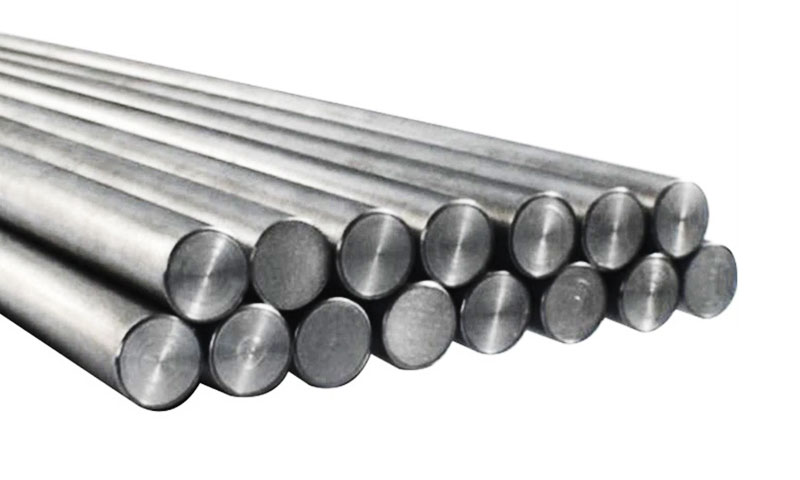1. 介绍
我们 S20910 (commonly marketed as 氮 50 或者 XM-19) and UNS S21800 (commonly marketed as 氮 60 或者 合金 218) are advanced austenitic 不锈钢 engineered for demanding service.
Both deliver better performance than conventional 300-series grades, but they are optimized for different priorities:
- S20910 (氮 50) 是一个 耐腐蚀, nitrogen-strengthened austenitic stainless optimized for high corrosion resistance (including sour service), 优势, 出色的韧性 (including cryogenic), 和良好的焊接性.
It is often specified where resistance to pitting, SCC and low-temperature toughness are required together with reasonable strength. - S21800 (氮 60) is formulated primarily for wear and galling resistance while retaining corrosion resistance typical of austenitics.
It contains high silicon and manganese for tribological performance and is selected where sliding contact, 累了, and high wear are the dominant failure modes.
This article compares composition, mechanical and corrosion behaviour, 制造, and real-world application trade-offs so you can select the right alloy for a specific component or environment.
2. What Is UNS S20910 (氮 50)
我们 S20910, 通常称为 氮 50 或者 XM-19, 是一个 high-performance nitrogen-strengthened austenitic stainless steel.
It is engineered to deliver a combination of 优异的耐腐蚀性, 高力量, 延性, 和韧性, including at cryogenic temperatures.
These attributes make it well-suited for demanding industrial applications such as chemical processing, 海洋环境, and sour-service conditions.
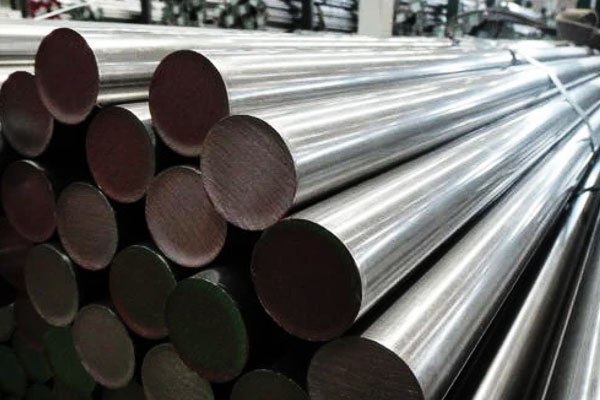
Key material designations and specifications 包括:
- ASTM A276 / A479 (as XM-19)
- UNS S20910
- 从 1.3964
Primary characteristics of UNS S20910 (氮 50):
- 耐腐蚀性: Enhanced by increased chromium, 钼, 和氮含量; highly resistant to pitting and crevice corrosion in chloride environments.
- 机械强度: Stronger than conventional 300-series stainless steels, with excellent yield and tensile properties.
- Ductility and toughness: Maintains performance at both elevated and cryogenic temperatures.
- Fabrication and weldability: Can be machined, 形成, and welded with conventional techniques; solution annealing restores ductility after cold working.
- Nitrogen-strengthened: Nitrogen addition increases yield strength and contributes to pitting resistance without compromising austenitic ductility.
- Application suitability: Listed in NACE MR0175 for sour service, suitable for marine hardware, 化学过程设备, 压力组件, and structural applications requiring corrosion resistance and mechanical performance.
3. What Is UNS S21800 (氮 60)
我们 S21800, 通常称为 氮 60 或者 合金 218, 是一个 high-performance austenitic stainless steel designed primarily for wear and galling resistance, while maintaining good corrosion performance typical of austenitics.
Its specialized composition makes it ideal for applications where sliding contact, 粘合剂, and high surface stress are primary concerns.
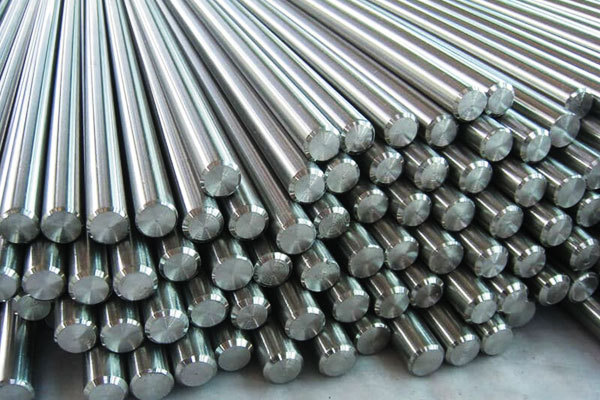
Key material designations and specifications include:
- ASTM A276 / A479 (for bars, 杆, and other wrought forms)
- UNS S21800
Primary characteristics of UNS S21800 (氮 60):
- Wear and galling resistance: Elevated manganese and silicon content, combined with a nitrogen-strengthened austenitic matrix, provides superior resistance to 累了, 粘合剂, and surface seizure.
- 耐腐蚀性: While not as corrosion-resistant as Nitronic 50 in highly aggressive chloride environments, 它提供 良好的一般耐腐蚀性 suitable for moderate chemical and marine exposures.
- 机械强度: Exhibits high strength in both annealed and cold-worked conditions, with excellent surface hardness after work hardening.
- Fabrication and welding: Can be welded and fabricated using standard methods, though its higher silicon and manganese content may require adjustments in welding filler selection and machining parameters.
- Application suitability: 通常用于 阀杆, 紧固件, 泵轴, bearing surfaces, and other components subjected to repeated sliding contact or wear-intensive service.
4. Typical Chemical Compositions and Alloying Differences
A critical factor distinguishing UNS S20910 (氮 50) and UNS S21800 (氮 60) is their alloying strategy, which directly influences corrosion resistance, 机械强度, wear behavior, and fabrication characteristics.
While both are nitrogen-strengthened austenitic stainless steels, they are optimized for different service priorities.
Representative Chemical Compositions (wt%) and Performance Role
| 元素 | UNS S20910 (氮 50) | UNS S21800 (氮 60) | Key Role in Performance |
| 碳 (c) | ≤ 0.06 | ≤ 0.10 | Controls strength, limits carbide formation; low C improves corrosion resistance and weldability |
| 铬 (Cr) | 20–23 | 16–18 | Primary contributor to corrosion resistance; higher Cr in S20910 increases PREN |
| 镍 (在) | 11–14 | 8–9 | 奥氏体稳定剂; 增强韧性和延展性; higher Ni in S20910 supports cryogenic performance |
| 锰 (Mn) | 5–6 | 8–9 | Increases work-hardening and galling resistance; high Mn in S21800 aids wear performance |
| 硅 (和) | ≤ 0.5 | 3.5–4.5 | Improves oxidation and wear resistance; higher Si in S21800 supports galling resistance |
| 钼 (莫) | 1.5–3 | 未指定 / 痕迹 | 增强凹痕和缝隙腐蚀性; present in S20910 to resist chlorides |
| 氮 (n) | 0.10–0.20 | 0.08–0.18 | Strengthens austenitic matrix; 改善耐腐蚀性; supports wear resistance in S21800 |
| 铁 (铁) | 平衡 | 平衡 | 矩阵元素; balances alloying; provides basic austenitic structure |
Interpretation: S20910 emphasizes Cr + 在 + 莫 + n (classic austenitic corrosion alloying with nitrogen strengthening and Mo for pitting resistance).
S21800 trades some chromium and nickel for elevated silicon and manganese, which improve hardness, wear and galling resistance.
4. Mechanical Properties and Temperature Behaviour
我们 S20910 (氮 50) and UNS S21800 (氮 60) exhibit distinct mechanical profiles reflecting their alloying strategies.
关键机械性能
| 性能特性 | UNS S20910 (氮 50) | UNS S21800 (氮 60) | Practical Implication |
| 0.2% 屈服强度 (MPA) | 350–420 | 320–380 | S20910 offers higher baseline strength for corrosion-critical applications; S21800 gains strength via work hardening |
| 抗拉强度 (MPA) | 650–750 | 600–700 | S20910 provides slightly higher ultimate strength; S21800 maintains adequate tensile strength with wear focus |
| 伸长 (%) | 30–45 | 25–40 | S20910 maintains excellent ductility; S21800 is slightly less ductile but sufficient for forming/fabrication |
| 硬度 (HRB / HRC) | HRB ~85 typical annealed | HRB ~85, can be higher with work hardening | S21800’s higher Mn/Si allows superior surface hardness after cold work, enhancing galling resistance |
| 影响韧性 (J at room temp) | 出色的; retains toughness at cryogenic temps (-196°C) | 良好; slightly lower than S20910 in cryogenic applications | S20910 preferred in low-temperature or highly dynamic loading applications |
| Elevated Temperature Performance | Good up to ~600–700°C | Reasonable; high Si improves oxidation resistance at moderate temperatures | S20910 favored for high-temperature corrosion exposure; S21800 for wear-exposed high-temperature components |
Temperature Behaviour
- Cryogenic Performance:
S20910 retains ~90% of impact energy at liquid helium temperatures, making it suitable for LNG storage, cryogenic piping, 和航空航天应用.
S21800 retains reasonable toughness but is not optimized for extreme low temperatures. - 升高的性能:
Both alloys maintain dimensional stability and strength at moderate elevated temperatures.
Nitronic 50’s Mo content provides additional resistance to high-temperature corrosion, while Nitronic 60’s high Si content improves oxidation resistance in sliding-contact applications. - 工作硬化:
Both alloys are austenitic and work-hardening, meaning mechanical properties, especially hardness and yield strength, can be increased via cold working.
S21800 benefits most due to high Mn and Si, improving wear and galling performance.
5. Corrosion Resistance and Pitting Resistance (木头)
固定性等效数 (木头) is a useful indicator of resistance to chloride pitting; it’s calculated from Cr, Mo and N content (simplified form: PREN ≈ Cr + 3.3×mo + 16×n).
- 氮 50 (S20910) — higher Cr, Mo and N yield PREN values in the low-to-mid 30s (typical engineering figure ≈ ~34).
That places it well above 316L (PREN ≈ 20–25) and makes it suitable for many chloride-bearing environments, including some marine and sour service (it is commonly accepted for NACE MR0175 qualifying in many conditions—verify certificate). - 氮 60 (S21800) — because Mo is typically absent and Cr is lower, PREN is 降低 (typical mid-20s or less depending on exact chemistry).
While S21800 resists general corrosion reasonably well, 这是 不是 chosen primarily for pitting resistance; 反而, it is used where galling and wear are primary concerns.
6. 穿, galling and tribological performance
- 氮 60 (S21800) 为设计 galling resistance and sliding wear.
High silicon and manganese, combined with work-hardening capacity, produce a surface that resists adhesive wear and metal-to-metal seizure.
Typical uses include valve stems, 座位, 紧固件, and pump components where repeated sliding contact occurs. - 氮 50 (S20910) 优惠 良好的耐磨性, but its primary strengths are corrosion resistance and toughness rather than optimized galling resistance.
It is sometimes used in wear applications where corrosion control is also required, but for extreme galling environments S21800 usually outperforms it.
7. 制造, welding and heat-treatment considerations
可焊性
- Both alloys are 可焊接 by standard processes (氩弧焊, 我, Smaw).
- S20910 (higher Ni/N) is highly weldable and retains corrosion resistance after welding when proper procedures and filler metals are used.
Low carbon and stabilized practices can minimize sensitization risk. - S21800 requires attention to heat input and filler selection because its high Si and Mn can influence weld metal composition; preheat/post-weld heat treatment practices depend on component size and code requirements.
Forming and machining
- Both are 工作硬化 austenitics; S21800’s higher Si/Mn can make cutting more challenging—tooling and speeds need adjustment.
S20910 in solution-annealed condition is generally easier to machine/form.
热处理
- These are austentic alloys—strength is primarily from cold working and alloying; full hardening by quench/tempering is not applicable.
Solution annealing can restore ductility and corrosion resistance (typical anneal ~1000–1100 °C followed by rapid cooling).
Hydrogen/sour service
- S20910’s chemistry and listing in some sour-service guidance make it suitable for H₂S environments (verify NACE/ISO certifications).
For sour service weld procedures and hardness limits (HRC thresholds) are normally enforced.
8. Applications of UNS S20910 vs UNS S21800 Austenitic Stainless Steel
The distinct alloying strategies, 机械性能, and corrosion/wear characteristics of UNS S20910 (氮 50) 和 UNS S21800 (氮 60) define their suitability across different industrial applications.
Applications of UNS S20910 (氮 50)
UNS S20910 is engineered for 高腐蚀性, 出色的韧性, 和良好的焊接性, making it ideal for environments where both corrosion and mechanical performance 很关键.
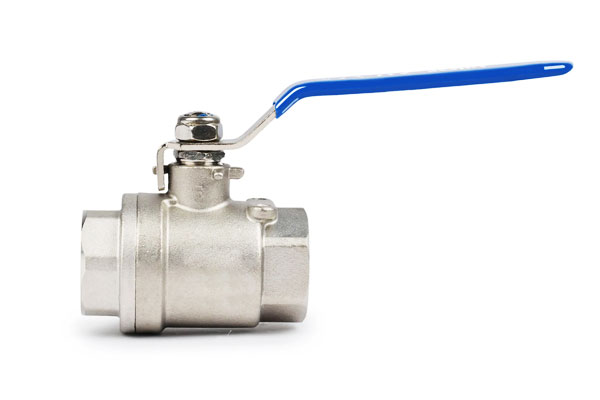
| 行业 / 部门 | 典型的应用 | Key Performance Requirement |
| 海军陆战队 & 离岸 | Seawater fittings, 泵轴, 紧固件, 阀 | 高氯化物的耐药性, prevention of pitting/crevice corrosion |
| 化学 & 工艺设备 | 热交换器, 反应堆, 管道, 坦克 | Resistance to acids, 氯化物, and sour service (暴露) |
| 低温应用 | LNG storage and transfer piping, cryogenic valves | Retains toughness at extremely low temperatures (-196°C) |
| 航天 | Fuel lines, cryogenic components | 高力量, 耐腐蚀性, low-temperature ductility |
| 活力 & 力量 | Boiler components, turbine parts in corrosive environments | Combination of corrosion resistance and mechanical integrity |
Applications of UNS S21800 (氮 60)
UNS S21800 is optimized for galling and wear resistance while maintaining reasonable corrosion performance.
It is ideal for mechanical components subjected to sliding, adhesive contact, or high surface stress.
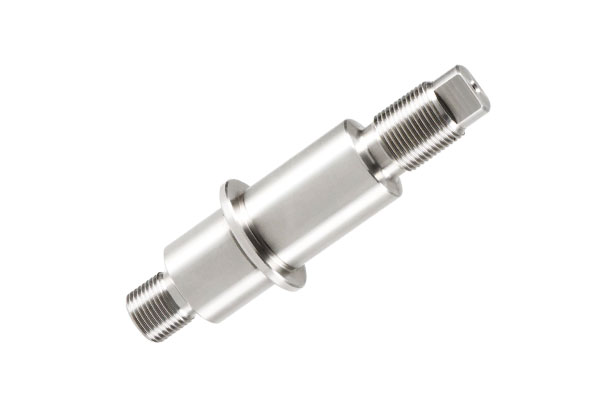
| 行业 / 部门 | 典型的应用 | Key Performance Requirement |
| 阀门 & Pump Industry | 阀杆, 座位, 泵轴, 紧固件 | High resistance to galling, 滑动磨损, adhesive seizure |
| 工业机械 | 轴承, 衬套, high-wear mating surfaces | 表面硬度, work-hardening capability, 低摩擦 |
| 汽车 & 重型设备 | 紧固件, high-wear components, 执行者 | Galling prevention, durability under repeated sliding or contact |
| 海洋应用 | Deck hardware, mechanical joints | Moderate corrosion resistance with high wear/galling protection |
| 化学处理 | Mixer shafts, agitator blades | Wear-resistant components where moderate corrosion occurs |
Application Guidance
- Choose UNS S20910 when the primary concern is corrosion resistance in aggressive or sour environments, especially when toughness, 可焊性, and low-temperature performance are required.
- Choose UNS S21800 when 累了, 穿, and sliding contact dominate failure modes, even if corrosion resistance is less critical.
- In complex assemblies, hybrid designs can leverage both alloys—using S20910 for corrosion-critical parts and S21800 for high-wear mating surfaces.
Surface engineering such as 涂料, 硝化, or PVD treatments can further extend service life when combined with these alloys.
9. Direct Comparison Table: UNS S20910 vs UNS S21800
| 特征 / 性能特性 | UNS S20910 (氮 50) | UNS S21800 (氮 60) | Practical Implication |
| Primary Focus | 耐腐蚀性, 韧性 | Wear/galling resistance, 表面硬度 | Guides selection based on environment and mechanical stress |
| 屈服强度 (MPA) | 350–420 | 320–380 | S20910 has higher baseline strength; S21800 can achieve higher surface hardness via cold work |
| 抗拉强度 (MPA) | 650–750 | 600–700 | S20910 slightly higher; S21800 optimized for wear resistance rather than ultimate strength |
| 伸长 (%) | 30–45 | 25–40 | S20910 more ductile; S21800 slightly less but adequate for fabrication |
| 硬度 (HRB / HRC) | HRB ~85 typical annealed | HRB ~85, can increase with work hardening | S21800 better for galling and surface wear applications |
| 影响韧性 | 出色的; retains cryogenic performance | 良好; lower at cryogenic temperatures | S20910 preferred in low-temperature or dynamic loading environments |
| 耐腐蚀性 | 很高 | 一般 | Guides alloy choice in chemical, 海洋, or sour-service applications |
| 穿 / Galling Resistance | 一般 | 很高 | S21800 is the preferred option for moving parts, 阀杆, 和紧固件 |
| 制造 & 焊接 | 出色的; solution annealed or strain-hardened | 良好; requires consideration for welding filler and machining parameters | S20910 easier to fabricate in complex geometries; S21800 may require tooling adjustments |
| 最大服务温度 | ~900°C | ~750°C | S20910 suitable for higher temperature corrosion exposure; S21800 for wear-exposed moderate temperatures |
| 木头 (固定性等效数) | ~34 | ~23.4 | S20910 provides superior resistance to pitting and crevice corrosion, 特别是在 |
10. 结论
我们 S20910 vs S21800 are complementary alloys within the Nitronic family.
Pick S20910 where corrosion resistance (especially pitting/crevice and sour service) plus toughness and weldability are paramount.
Pick S21800 where galling and wear dominate and corrosion is a secondary concern.
In many real applications the optimum solution is a combination—design the system so each part sees the alloy best suited to its dominant failure mode, or apply surface engineering to extend service life.
常见问题解答
Are UNS S20910 and S21800 magnetic?
No—both are fully austenitic (or near-fully austenitic) 退火状态, with magnetic permeability <1.005 (ASTM A342). Cold working may induce weak magnetism, but this is reversible via annealing.
Can I weld S21800 with standard stainless fillers?
是的, but select fillers and procedures to accommodate S21800’s high Si/Mn chemistry—consult welding procedure specifications and filler supplier guidance.
Which alloy resists sulfide stress cracking (SSC)?
S20910 is commonly accepted for many SSC environments and is used in NACE-subject applications; verify specific NACE/ISO certification and hardness limits.
Is Nitronic 60 (S21800) suitable for seawater?
It has reasonable general corrosion resistance in seawater but lacks the pitting resistance of Nitronic 50 or Mo-bearing grades; if seawater pitting is critical, choose S20910 or a higher PREN alloy.
Can either alloy be heat-treated to increase strength?
These austenitic alloys gain strength mainly by 冷工作 和合金; conventional quench/temper treatments are not used to significantly increase strength. Solution annealing restores ductility/corrosion resistance.
